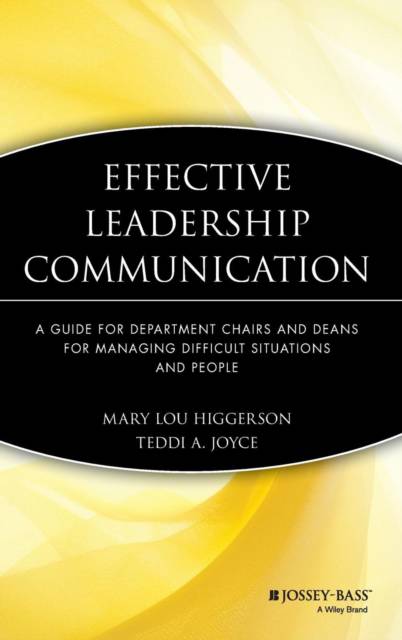
- Retrait gratuit dans votre magasin Club
- 7.000.000 titres dans notre catalogue
- Payer en toute sécurité
- Toujours un magasin près de chez vous
- Retrait gratuit dans votre magasin Club
- 7.000.0000 titres dans notre catalogue
- Payer en toute sécurité
- Toujours un magasin près de chez vous
Leadership Communication Chairs Deans
A Guide for Department Chairs and Deans for Managing Difficult Situations and People
Mary Lou Higgerson, Teddi A JoyceDescription
This book, at its core, is about communication strategies that support effective leadership. First it shows how to establish a foundation for effective leadership communication; next, it discusses developing a fair and effective leadership communication style; and finally, it shows how to employ leadership communication to manage especially difficult people, from prima donnas to pot stirrers.
Each chapter contains a series of questions and prompts to guide readers through a hypothetical but realistic situation, and encourages them to cultivate and practice the first-person participant and third-person observer roles. By moving between these two perspectives, readers will gain more insight into their own style of managing conflict and understanding of leadership. This skill also permits academic leadership to have more strategic control over the communication in a particular situation, thus empowering them to feel and to be more in control in every situation.
Spécifications
Parties prenantes
- Auteur(s) :
- Editeur:
Contenu
- Nombre de pages :
- 288
- Langue:
- Anglais
- Collection :
- Tome:
- n° 94
Caractéristiques
- EAN:
- 9781933371191
- Date de parution :
- 01-04-07
- Format:
- Livre relié
- Format numérique:
- Genaaid
- Dimensions :
- 157 mm x 231 mm
- Poids :
- 589 g

Les avis
Nous publions uniquement les avis qui respectent les conditions requises. Consultez nos conditions pour les avis.






